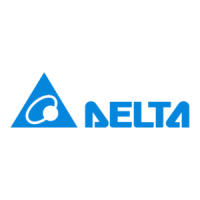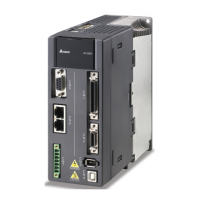What to do if data type (size) error occurs when accessing CANopen object on Delta Servo Drives?
- AAngela WalterAug 29, 2025
If the data length in the message does not match the specified object, NMT Maser send “Reset node“ command to its slave or reset the fault by sending the control word (0x6040) through CAN communication (the value of CANopen object 0x6040 should be reset).



